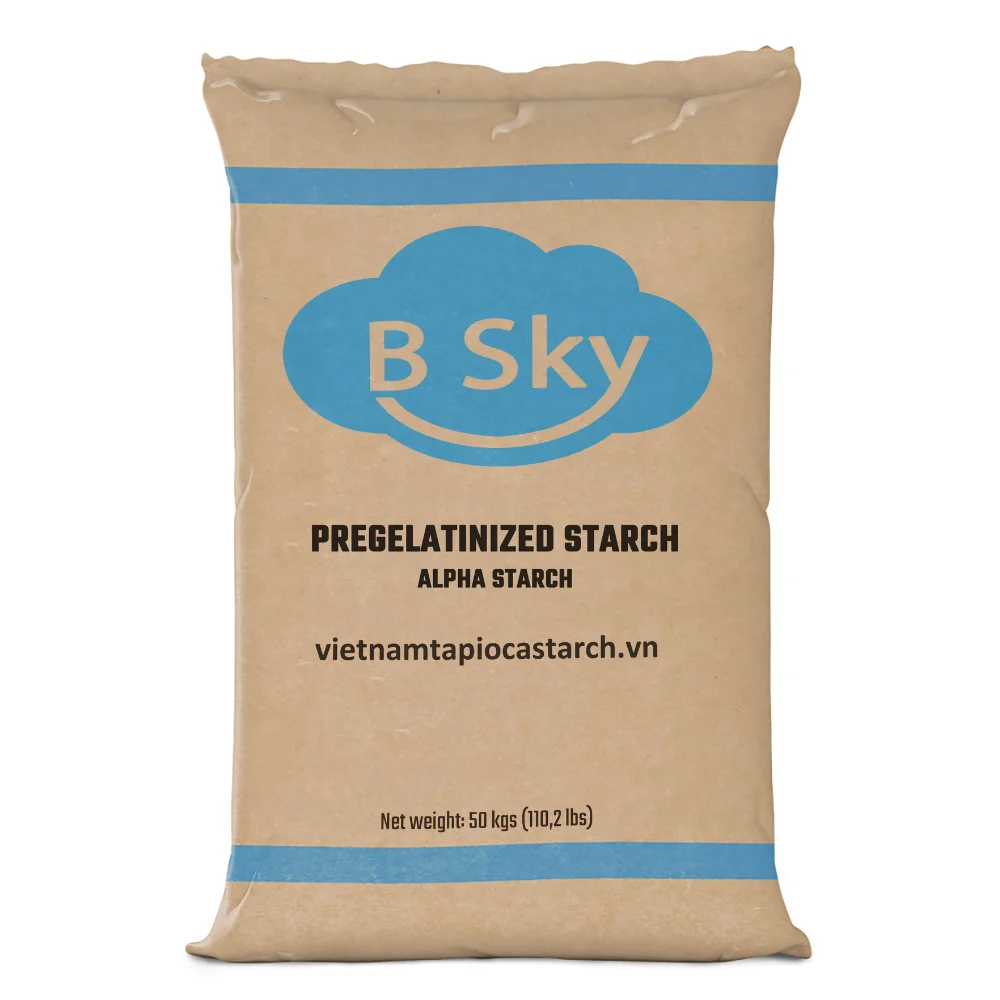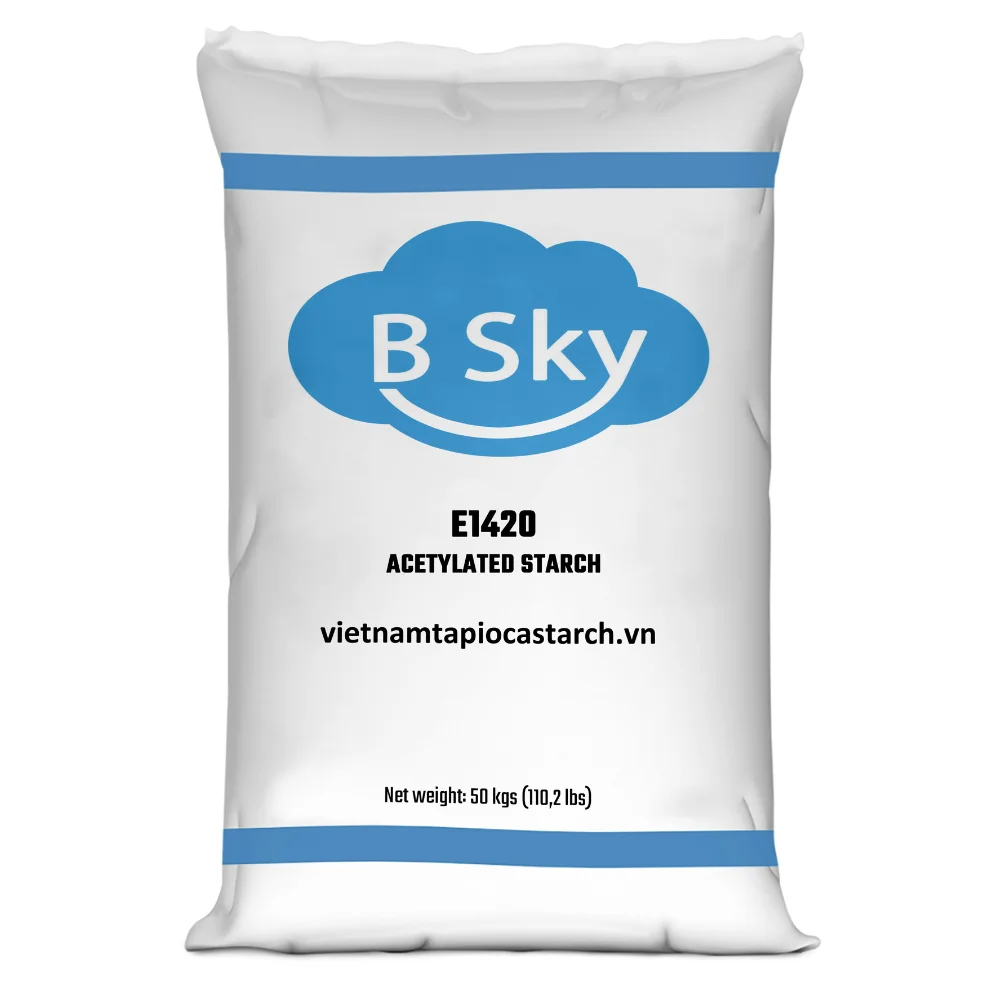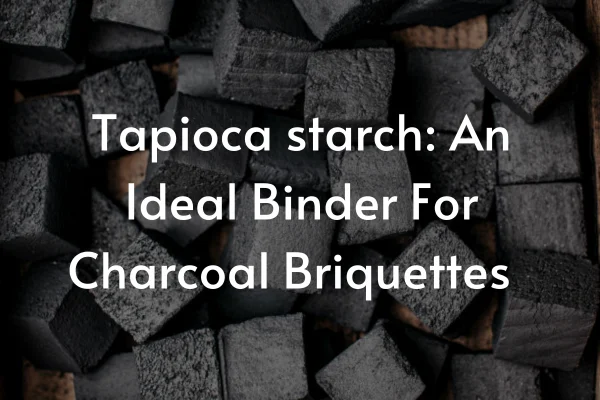
A Comprehensive Manual To Vietnam Modified Tapioca Starch
- Home
- Tapioca Starch Products
- A Comprehensive Manual To Vietnam Modified Tapioca Starch
Greetings to our in-depth manual regarding Vietnam modified tapioca starch. Within this article, we aim to delve into the realm of this versatile ingredient, examining its attributes, the motives for its modification, and the diverse techniques employed to attain the desired alterations. Our exploration will encompass the distinct varieties of tapioca starch types in Vietnam, shedding light on their specific applications across various industries. Whether you're engaged in food production, or any industries, acquiring insights into the advantages and applications of modified cassava starch can significantly enhance your manufacturing processes and product quality.
Introduction to Vietnam Modified Tapioca Starch
What is Modified Tapioca Starch?
Modified tapioca starch is a versatile and widely used food ingredient that has gained popularity among consumers around the world. It is derived from cassava, a root vegetable that is native to Vietnam. The process of modification involves treating the native starch with various physical, chemical, or enzymatic methods to enhance its functional properties. It is known for its superior thickening and stabilizing abilities, making it a valuable ingredient in a wide range of food applications. Some also helps in other industries, like paper, textile, etc.

Why to Modify Native Tapioca starch
The need for modification to native tapioca starch arises from its natural state's limitations in various applications. Native tapioca starch, extracted from the root of the cassava plant, possesses certain characteristics that make it unsuitable for certain food and industrial purposes.
Firstly, native tapioca starch has a relatively low viscosity, which may not provide the desired thickening or binding effect in certain recipes or manufacturing processes.
Secondly, modification process can help starch solute in water at an expected temperature in customer recipe.
Additionally, native starch's limited stability under high temperatures can result in texture and sensory issues in food products. The modification of tapioca starch aims to overcome these limitations and enhance its functionality in a wide range of applications.

How to Modify Tapioca Starch
Modifying tapioca starch is a crucial step in enhancing its functionality and versatility in various applications. There are several methods to achieve this modification, each resulting in unique characteristics and properties suitable for specific uses.
One common technique is physical modification, which involves processes such as heating, cooling, and drying. In tapioca industry, alpha starch is a physically modified. Alpha physically modified starch is a form of starch that has been processed at high temperatures with water and then dried to produce the final modified product.
Another common method is chemical modification, where chemical agents are used to modify the starch molecule, resulting in imporved functionalities of the starches like increased stability, resistance to high temperatures, and improved emulsifying capabilities.
Lastly, enzymatic modification is a more natural approach, using specific enzymes to break down and modify the starch molecule, leading to improved digestibility, lower glycemic index, and enhanced nutritional properties. Understanding the different methods of modifying tapioca starch allows businesses and individuals to select the most suitable type of starch for their specific needs and applications.

Physically-modified cassava starch
Physically-altered tapioca starch refers to the transformation of tapioca starch through physical processes such as heating, cooling, drying, and grinding. This method aims to improve the functionality and versatility of tapioca starch, making it suitable for various applications in the food industry.
One common type of physically-altered tapioca starch is Clean-label Pregelatinized starch or also called Alpha starch (a cold-swelling tapioca starch).
Have a look at this clean-label modified starch here: https://www.youtube.com/shorts/vPNxp9L0zm4
Chemically-modified cassava starch
Another method used to modify tapioca starch is through chemical processes. Examples of chemically-altered tapioca starch types include hydroxypropylated starch, acetylated starch, and cross-linked starch. These modifications alter the physical and chemical properties of the starch, resulting in improved stability, texture, and thickening capabilities.
Some examples of Chemically altered tapioca starch
- Acetylated Starch (E1420)
- Distarch Phosphate (E1412)
- Oxidised Starch (E1404)

Dual-modification tapioca starch
Alongside the chemically modified starch, dual-modification tapioca starch is another variant that deserves attention. Dual-modification tapioca starch undergoes additional modifications that further enhance its properties. Dual modification results in a starch with increased resistance to heat, acidity, and shearing.
Some examples of tapioca starch with Dual Modification
- Acetylated Distarch Phosphate (E1414)
- Acetylated Distarch Adipate (E1422)

Vietnam common modified tapioca starch
Not only being one of leading producer in Native tapioca starch, Vietnam is renowned for its high-quality modified cassava starch, making it a perfect choice for those looking to purchase tapioca starch in bulk. In fact, demand for Modified tapioca starch from Vietnam has been increasing much these days.
Below are the most common modified tapioca starch in Vietnam:
Pregelatinized starch (Alpha starch)
Alpha physically modified starch (Cold-swelling tapioca starch) is a form of starch that has been processed at high temperatures with water and then dried to produce the final product.
Alpha physically modified starch, a cold-swelling tapioca starch, dissolves easily in water at low temperatures, forming a transparent and viscous solution. Additionally, it can gel as the temperature rises, aiding in the creation of gel structures in food and pharmaceutical products.
Common applications: Food, Animal feed, Adhesive,…

Acetylated starch (E1420)
Acetylated Starch (E1420) , also known as Starch Acetate (INS1420), is a type of modified tapioca starch produced by esterifying native cassava starch with acetic anhydride or vinyl acetate. This esterification process replaces hydroxyl groups with acetyl esters, resulting in a unique molecular structure that enhances the starch's temperature and stability properties.
The modification improves the heat resistance and durability of food and industrial products.
Common Applications: Mainly food industry, such as noodles, frozen food products, snack and confectionary, dairy products (yoghurt),…

Distarch phosphate (E1412)
Modified tapioca starch E1412 (Distarch Phosphate), commonly referred to as cross-linked starch, is a modified starch derived from cassava. The stable structure created by cross-linking provides additional advantages in the food industry and serves as a safer alternative to toxic borax.
Distarch Phosphate Tapioca base also has improved viscosity and stability thanks to its special molecular structure.
Common Applications: Mainly food industry, such as meat products (sausage, meatball, jambon,…), Gummy Candy, Sauce products, Canned food,…

Acetylated distarch phosphate (E1414)
Modified tapioca starch E1414 (Acetylated Distarch Phosphate) is produced from food starch through esterification and cross-linking processes, utilizing compounds like vinyl acetate or phosphorus oxychloride.
Common Applications: Mainly food industry, pharmacy and cosmetics

Acetylated distarch adipate (E1422)
E1422 Acetylated Distarch Adipate is produced by treating natural cassava starch with adipic anhydride and acetic anhydride, resulting in a white powder that enhances stability at high temperatures. This dual-modified tapioca starch exhibits the properties of both acetylated starch and cross-linked starch. This modification helps improve stability of tapioca starch.
Common Applications: Mainly Food industry, such as different sauce types (ketchup, chili sauce, mayonnaise…), Meat products, Dairy foods (yoghurt, chocolate milk,…), confectionary,…

Pregelatinized acetylated distarch adipate (Pregel E1422)
Pregelatinized Acetylated Distarch Adipate (Pregel E1422) is a cold-water swelling tapioca starch. This is a modified starch that has been processed to swell in cold water. Traditional starches require heat to thicken and swell, but cold-water swelling starch can disperse and thicken in cold water or other cold liquids without the need for using heat.
Common Applications: Mainly food industry, such as Coating Peanut, sauce types, Canned food,…

Oxidised Starch (E1404)
Oxidized starch E1404 with tapioca base, is a modified starch produced through the treatment of native tapioca starch with oxidizing agents. This process alters the starch's properties, enhancing its functionality.
Common Applications: Food, Pharmacy, Paper and Construction industries.

Applications of Modified Cassava Starch
With its natural origins and non-duplicative production methods, Vietnam's modified manioc starch boasts a wide range of applications in the food industry.
Food and beverage industry
Modified cassava starch can play various roles in in food application, as Thickening agent, Stabilizer, Texturizer, … It applies to many food types, namely anned food, frozen food, dry mixes, baked goods, snacks, noodles, dressings, soups, sauces, dairy products, meat and fish products, etc., improving food quality. Not only food, modified starch is also used for stabilizing or thickening juices and drinks.
Textile industry
Modified manioc starch is used a a sizing agent in textile processing to improve yarn strength.
Paper industry
It can be a binder and coating agent in paper production.
Pharmaceuticals
Tablet Binding: Used as a binding agent in the pharmaceutical industry for tablet formulations.
Adhesives
Glues and Adhesives: Utilized in the production of adhesives.
Biodegradable plastics
Eco-Friendly Packaging: Incorporated into the formulation of biodegradable plastics instead of traditional plastics.
Construction materials
Construction additives: Used in the production of construction materials, such as gypsum board.
B Sky - Be Your Tapioca Starch Solutions
If you are looking for Vietnam affordable-quality tapioca starch with:
- Food grade (Low SO2 starch)
- Standards: ISO, SMETA, HACCP, HALAL, KOSHER, FSSC, USFDA
- Diverse customization: 20/25/50kg PP/paper bag, 850kg jumbo bag…
Please feel free to contact us directly at:
- Whatsapp/Wechat: +84 98 352 45 99
- Email: marketing@viegoglobal.com
- Website/Blog: www.vietnamtapiocastarch.vn
Related Articles
A Complete Introduction To Vietnam Tapioca Starch
Welcome to our comprehensive article on Vietnam tapioca starch , where we delve into its ...
Vietnam Tapioca Starch For Charcoal Briquettes Production
Tapioca starch for charcoal briquettes has received considerable attention in recent years. In this ...
Modified Tapioca Starch for Canned Food - A Great Enhancer
Modified tapioca starch for canned food is a crucial ingredient to its production, providing ...
Exploring Modified Tapioca Starch for Mayonnaise Production
Modified tapioca starch for mayonnaise plays an important role to food manufacturers. With its ...




